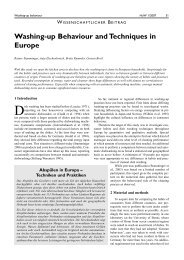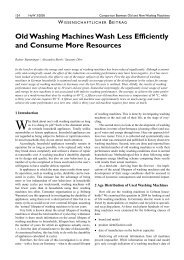Development of a novel mechatronic system for mechanical weed ...
Development of a novel mechatronic system for mechanical weed ...
Development of a novel mechatronic system for mechanical weed ...
Create successful ePaper yourself
Turn your PDF publications into a flip-book with our unique Google optimized e-Paper software.
Results and discussion<br />
76<br />
5.2.1 Optimisation <strong>of</strong> the arm length<br />
The maximum and minimum arm lengths was calculated considering the<br />
required hoeing depth d and the necessary confidence that duckfoot knives<br />
need to achieve a cut under the soil surface cultivating the specified hoeing<br />
width. It was estimated that an arm length in the range <strong>of</strong> 350 - 550 mm,<br />
measured from the rotational axis to the cutting edge <strong>of</strong> the duckfoot knife,<br />
<strong>of</strong>fers enough freedom <strong>for</strong> positioning the trajectory between plants and<br />
provides a hoeing width that is wide enough to cultivate the whole area which<br />
cannot be reached with inter-row equipment.<br />
Depending on the soil surface cultivation quality and roughness, a minimum<br />
hoeing depth hdmin needs to be defined, providing the optimal impact and<br />
necessary hoeing width on the root <strong>system</strong> <strong>of</strong> the <strong>weed</strong>s with a high level <strong>of</strong><br />
confidence (see Figure 5.10). On the other hand a maximum hoeing depth<br />
hdmax needs to be defined because it influences the soil resistance to hoeing<br />
and on that way it also affects the torque on the shaft <strong>of</strong> the motor.<br />
hdmin = hdmax – surface roughness<br />
Figure 5.10 Trajectory <strong>of</strong> the duckfoot knife under the soil surface<br />
with minimum and maximum hoeing depth





